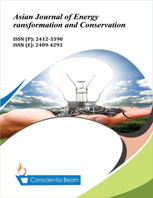A Novel Approach for Lithium Extraction from Sea-Water and Subsequent Battery Fabrication for Solving Energy Crisis: Energizing the Earth for Future Dearth
DOI:
https://doi.org/10.18488/journal.81.2021.51.1.7Abstract
The Environment seems to be in detrimental health conditions owing to extensive pollution from the vehicles using conventional sources of fuel energy. Renewable energy sources and technologies possess the acumen to provide solutions to the long-standing Global Energy problems and our paper unveils one such novel technique for the extraction of Lithium metal from Seawater (Renewable, Sustainable and Infinite Energy Resource), followed by the fabrication of Lithium batteries that would eventually be employed in the automobile and several other industries. The collected Seawater is first passed through a Graphene mesh network whereby, the water network bifurcates into two halves: one half consisting of pure water and the other half consisting of Brine which is our chief concern. This Brine contains Lithium in the form of insoluble Lithium Carbonate (Li2CO3) which when heated and then treated aptly, produces the target metal Lithium (discussed vividly with associate reactions in the full paper) which may be deployed in the manufacturing of rechargeable Lithium-ion Batteries (LIBs) for use in Green Vehicles. The formation of dendrites can be potentially done away with by effectively creating electrodes with Smoother Surface finishes. Furthermore, on adding small amounts of HF and H2O in the electrolyte, the resultant formation of Li2O and LiF coatings help to vanquish these dendrites and whiskers thereby making the procedure effective, efficient and void of any disparities.

